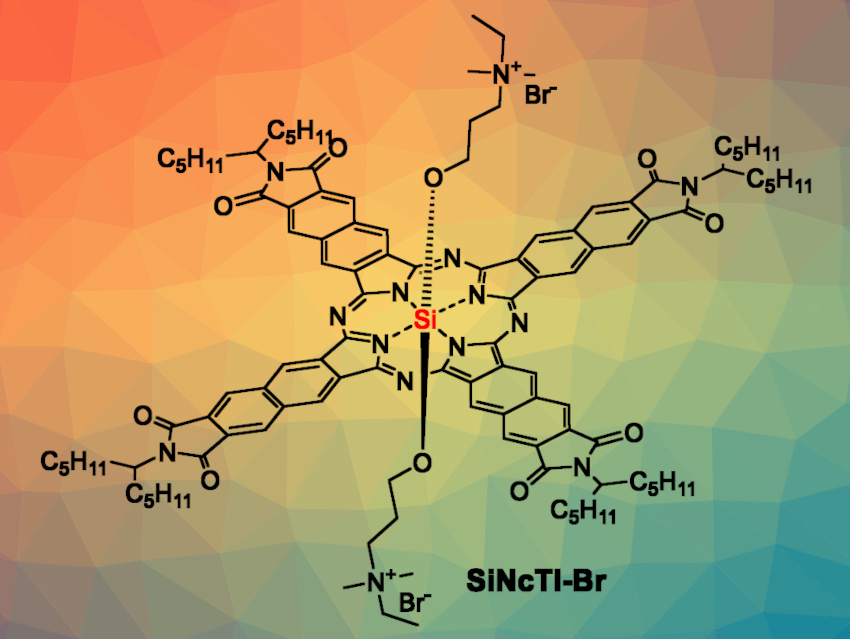Organic solar cells (OSCs) have the potential for use in low-cost, lightweight, and flexible devices. High-performance OSCs require excellent interface materials, especially cathode interlayers. High-performance cathode interlayer materials (CIMs) should have a strong work function tunability, high conductivity, good stability, and beneficial interface contact. However, effective chromophores for CIMs remain scarce.
Zhongyi Yuan, Xiaohong Zhao, Nanchang University, China, Zhi-Guo Zhang, Beijing University of Chemical Technology, China, and colleagues have created high-performance cathode interlayer materials by introducing hydrophilic quaternary ammonium and electron-withdrawing imide groups to naphthalocyanines cores. The team reacted N-heterocyclic precursors (6,8-diimino-N-(1-pentylhexyl)-1,3-naphthalene monoamide) with SiCl4 in dry quinoline to induce the formation of the naphthalocyanine ring and its coordination to silicon. Hydrolysis of the resulting intermediate and reactions with N,N-dimethyl-propanolamine and bromoethane were then used to introduce the desired ammonium-functionalized units.
The prepared naphthalocyanine tetraimide chromophores were incorporated into solar cells. The optimized candidate with bromide counteranions counterbalancing the ammonium substituents, SiNcTI-Br (pictured), demonstrated higher power conversion efficiency (16.71 %), better thickness insensitivity (up to 25 nm), and better stability than common CIMs such as the perylene diimide derivative PDINO or the conjugated polyelectrolyte PFN-Br.
- Silicon Naphthalocyanine Tetraimides: Cathode Interlayer Materials for Highly Efficient Organic Solar Cells,
Chunsheng Cai, Jia Yao, Lie Chen, Zhongyi Yuan, Zhi-Guo Zhang, Yu Hu, Xiaohong Zhao, Youdi Zhang, Yiwang Chen, Yongfang Li,
Angew. Chem. Int. Ed. 2021.
https://doi.org/10.1002/anie.202106364



